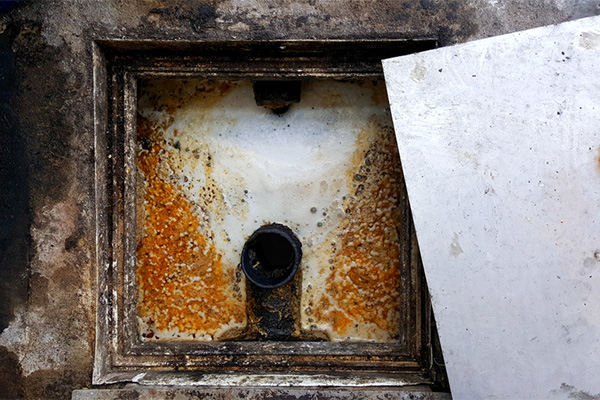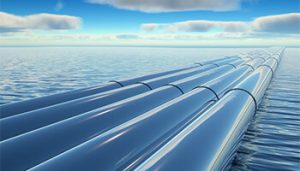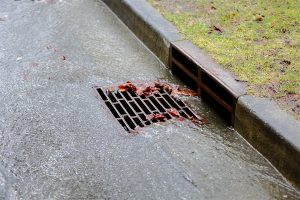“Restaurant wastewater enters Grease traps from 3-compartment sinks and automatic dishwashers. The grease trap tank acts as a reservoir holding the wastewater and food solids that enter the trap. As the wastewater cools, the fat, oil, and grease (FOG) harden and the food solids settle. The FOG, being lighter than water, floats to the top of the grease trap. The wastewater is forced through the grease trap and out to the sanitary sewer. The FOG and food solids remain in the tank, increasing in volume daily. Food solids and grease sludge (brown grease) settle to the bottom of the grease trap.
Grease Traps were never designed to stop 100% of the grease from reaching the drain. A well maintained grease trap allows 15% of the grease in the wastewater to perpetually flow into the sanitary sewer. Grease traps at full capacity discharge 100% of the restaurant grease and wastewater into the sanitary sewer. When a grease trap is full of grease sludge the trap is incapable of capturing any grease or food solids whatsoever.”
Read more about grease traps and their usage in the restaurant industry here.
Restaurant owners have become all too familiar with the difficulties of maintaining grease traps and lines. Regular maintenance and inspection is necessary to ensure major clogs or problems don’t happen later down the road. However, things happen and if your restaurant is suffering from a line clog, getting it cleared right away will certainly give some peace of mind.
D.C. Annis Sewer routinely helps restaurant owners with their grease line and trap issues. We offer both grease trap pumping and water jetting of grease lines. For more information, call us at 612-861-6425 or visit our commercial services page.






